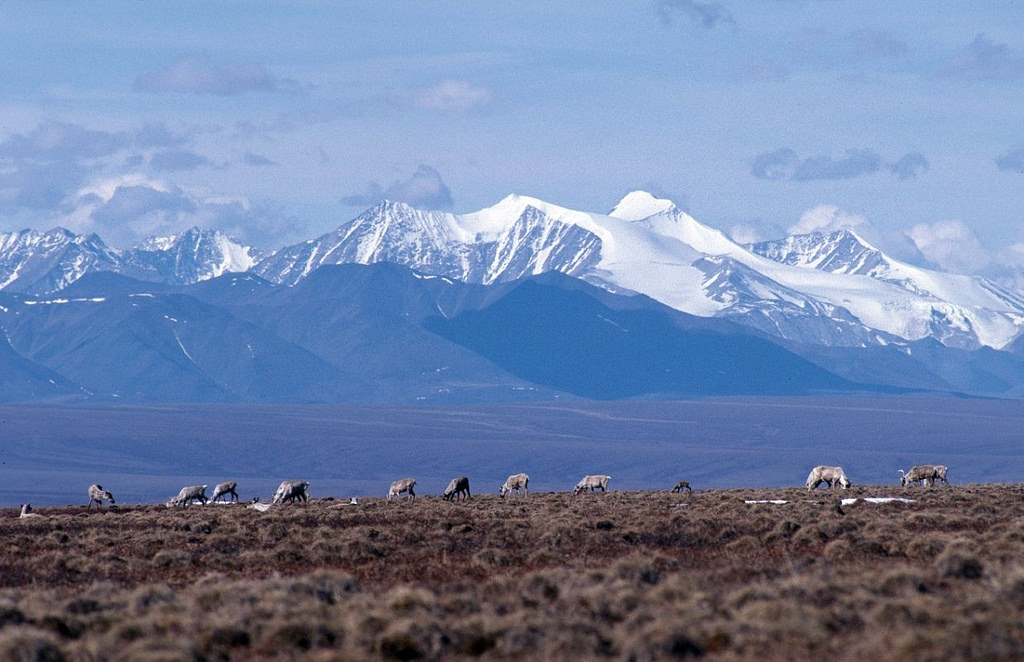How the Trump administration’s rush to drill in Alaska’s Arctic refuge is backfiring
By rushing the environmental review of drilling plans, the Trump administration has created more opportunities for opponents to push back.

In early 2018, as the Trump administration began its dash to drilling in the Arctic National Wildlife Refuge, federal experts identified gaps in the scientific record about everything from polar bears to caribou.
The memos remained hidden from public view until this year, when an environmental group published the information the day before the comment period ended on a draft study of ANWR oil leasing.
The documents from the U.S. Fish and Wildlife Service and additional comments by the agency, which manages the refuge, will give legal leverage to drilling opponents who are certain to challenge oil leasing in federal court in the months ahead.
Here are some of the gaps identified more than a year ago:
The most detailed vegetation map is from 1994. Air quality modeling is deficient. Studies of the impact of oil development on caribou are drawn mainly from the 1980s and 1990s. Polar bears living in the area proposed for oil development have been little studied and are not well understood.
It’s ironic that ever since the approval by Congress in late 2017 of oil leasing in ANWR, the biggest threat to oil leasing in ANWR has been the Trump administration.
It’s willingness to cut corners to make oil drilling a reality before the next shift in the political winds in Washington, D.C. has come at the expense of the careful analysis required by law.
The gaps in the scientific knowledge of ANWR stem from the political reality of the recent past. Opposition to ANWR drilling has been a priority of environmental groups trying to protect wild areas of the U.S. for decades.
During the Obama administration, the U.S. Department of Interior did not study the relationship of key environmental questions to oil drilling in the refuge because there was no chance of it happening.
The lack of this background evidence on key matters of science is the biggest weakness in the Trump plan, though the administration won’t admit it.
The sudden reversal of U.S. policy on ANWR took place in late 2017 when the Republican Party controlled both houses of Congress and the White House. The language to allow oil drilling was slipped into the federal tax cut by Alaska Sen. Lisa Murkowski and became law with Trump’s signature.
The action did not repeal the environmental safeguards established in law, however. The memos written in early 2018 called for what would in some cases be multi-year research efforts to understand how drilling would impact polar bears and other key issues.
The latest evidence about the pitfalls of the Trump dash to drilling comes from comments by the Fish and Wildlife Service about deficiencies in the draft environmental impact statement.
Drilling supporters feared that the agency managing the refuge would raise lots of questions about the process, so the law transferred the responsibility to the Bureau of Land Management, deemed to be more of a pro-drilling agency.
And the pro-drilling philosophy under the Trump administration is reflected in the lack of consideration given to climate change in the BLM environmental review.
For instance, BLM says bird habitat would “change slowly” with climate change. The Fish and Wildlife Service suggests cutting that sentence or providing the details on ways in which it is already happening in a variety of ways.
Conservative politicians in Alaska, including Gov. Mike Dunleavy, complain that employees of the Fish and Wildlife Service are trying to “undermine” the pro-drilling campaign.
The evidence so far is that the agency and its employees are trying to make sure that the law is followed by those in the Trump administration who want to undermine the rules aimed at protecting the environment.
The wildlife service introduced its comments on the leasing study with a general statement about the need for an impact statement “that can withstand the scrutiny of legal sufficiency.”
There is no outright statement from the agency that the environmental plan will fail to pass legal muster, but the 57-page document points to weak spots that could create court-ordered delays.
Federal law specifies five purposes for the refuge—the fifth was the 2017 addition of oil and gas leasing.
The Fish and Wildlife Service said the BLM should provide a “more explicit analysis and comparison” of how the leasing program impacts the other four purposes of the refuge contained in law—conserving fish and wildlife, complying with international fish and wildlife treaties, subsistence activities and preserving water quality and quantity.
All five of those purposes must be taken into consideration by the refuge managers, not just oil and gas development, though the latter is the only one championed by the Trump administration.
Dermot Cole can be reached at de*********@gm***.com.